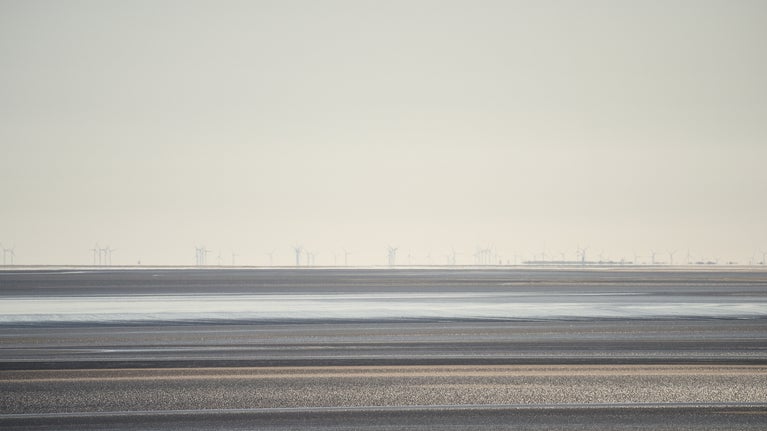
Discover more at Arnside and Silverdale
Find out how to get to Arnside and Silverdale, where to park, the things to see and do and more.

It’s the contrasts that make Jack Scout such a special place to visit. Explore secluded paths between the bushes and find the hidden ways down to pebble beaches, where children (and adults) can beachcomb and rock-scramble. Or stand on the cliff and soak up the views of Morecambe Bay, the Lakeland fells and the surrounding countryside.
Blackthorn, associated with overcoming obstacles for a better future and hope for the year ahead, can be seen all around.
The scrub at Jack Scout is stunning, with creamy white clouds of flowers dotted around.
Keep an eye out for chiff chaffs, black caps and warblers flying in across the sea after their long journey to enjoy the scrub and trees at Jack Scout.
The view of Morecombe Bay is a big draw for Jack Scout, and it’s also an excellent place to see the Arnside tidal bore. The tidal bore is a rare phenomenon where the incoming tide is forced through a narrow bay against the direction of the bay’s current. The push and pull of the tide and current causes a tidal wave. Pay a visit in spring after a lot of rain to see the highest waves. There’s a siren to indicate when it’s on its way.
You can’t miss the grey limestone all over Arnside and Silverdale. Formed about 330 million years ago when warm seas left marine sediments in layers which later became compressed and turned into rock, it is one of the oldest features of the landscape here.
Look carefully in the coastal limestone at Jack Scout and you may discover some good examples of coral fossils and brachiopod fossils.

During the winter, winter waders arrive to roost, flock and feed on the edge of the tide looking for tasty morsels and quickly poking down for worms before the water trickles over their feet and sand. You can watch their cycle repeat itself as they feed and fly up and land and flock.
Birds are in abundance at Jack Scout so don’t forget your binoculars. If you time your visit right, after the daytime walkers have gone home, you will be welcomed by calling birds. See if you can spot oystercatchers and curlews digging in the sand with the sea lapping nearby, and look out for warblers and blackbirds on the land.
As one of two cliffs in the area, it’s a good place for breeding songbirds, but you’ll also spot some weary migrating birds taking the opportunity for a bit of a pit stop.
For the best seat in the house when the sun is setting, look for the Giant’s Seat overlooking Morecambe Bay. The large limestone bench is big enough to fit four and has been a beloved spot for soaking up the view (and some peace and quiet) for generations. You’ll also find a lime kiln at the north end of Jack Scout.
Jack Scout is a fantastic spot for a picnic but do please remember to take any litter home with you.

Find out how to get to Arnside and Silverdale, where to park, the things to see and do and more.

Find out about walking your dog at Arnside and Silverdale, from the facilities available to how you can help us to protect the local wildlife. Arnside and Silverdale is a two pawprint rated place.

Explore Arnside and Silverdale in Cumbria, an area of national importance for wildlife such as wildflowers, butterflies, glow-worms and wood ants.

Visit Eaves Wood at Arnside and Silverdale to discover centuries-old yew trees and a monument to Queen Victoria where you can pause to take in the view over Silverdale.

Explore the hills and paths of Arnside Knott and climb to the top for sweeping views. What wildlife and rare wildflowers will you spot on your visit to Arnside Knott?

Plan a visit to one of the special countryside places in our care and discover the benefits of being in the great outdoors. Pack your walking boots and get ready to explore woodlands, valleys and rivers.

Explore some of the finest landscapes in our care on coastal paths, accessible trails, woodland walks and everything in between. Find the best places to walk near you.

Explore the Lake District's majestic mountains – among them Scafell Pike, the tallest in England – ancient woodland, hidden waterfalls, rugged coastline and, of course, its many lakes. You might even spot a red squirrel, roe deer or bird of prey.

Discover some of the best coastal spots and beaches to explore in the Lake District.